Blue False Indigo is a very attractive plant that blooms in the middle of Spring. A perennial that sports large clover-like leaves in light green flowers quite beautifully in dark blue and deep purple.
So far, I’ve only seen it in flower beds and not in the wild anywhere. As a matter of fact, the blue false indigo photographed here grew from seeds collected from seed pods of a group that had flowered so nicely the spring before. Blue False Indigo, Baptisia australis, is a member of the Pea Family that is native to North America.
My introduction to this deep purple flowering perennial were a dozen or more plants that were part of the landscaping at the local college library. I made a mental note to myself to return to the scene of the lovely deep purple flowers when the seed pods seemed to be ripe and rattle with seeds.
When I went back there it must have been the end of the summer. The seed pods had turned their faded purple color and the seeds rattled in their pods. Took out my trusty pocket knife, sliced off a few flower stems and slipped them in my backpack. Each one had a half dozen or so seed pods.
A couple years later the seeds were finally planted in a flower bed next to the house. What you see in the image below is a cluster of plants that are about six years old. No flowers appeared the first year on the scant foliage, only a few blooms opened the second year. I’m sure the plant would be considered mature now as the deep purple to blue flowers have been outstanding for the last four years.
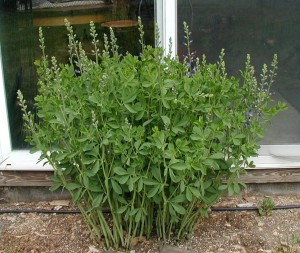
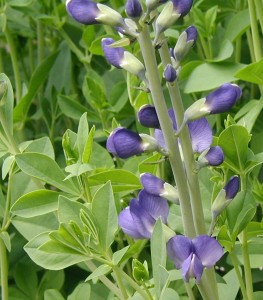
The pointed, oval leaves appear in threes, and they start out in an accordian shape, all folded up. The clover-like leaves are widest near the tip.
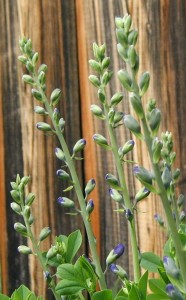
Violet and indigo flowers command attention in the bright May sunshine. Once the blooming is in full swing the spikes tend to arch over with the weight of the flowers and developing seedpods. Photos above taken 2 May 2010.
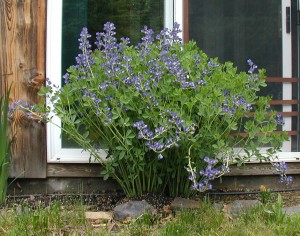
The same false indigo plant flowered beautifully last year, as seen in the photo above taken 23 May 2009.
Pea-type flowers produce several seeds inside elongated seed pods.
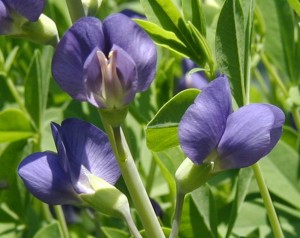
Photo above taken 23 May 2007.
In the image below taken 23 May 2009 is a fertilized false indigo flower. Note that a seed pod is growing out of the flower and that the side wing petals have fallen away to leave the broad purple standard petal at the top and, in this case, a white keel at the bottom of the bloom. Stamens are usually tucked inside the keel.

By the end of May the flowers are past done and all seed pods are well-formed. The pods will turn a deep purple to black as they ripen. The stalks of colorful seed pods can be used as points of interest in flower arrangements.
Peterson’s Medicinal Plants Guide indicates that Blue False Indigo, as well as other species of Baptisia, are potential immune system stimulants. Native Americans used the roots in treating inflammation.
Once the stems get 3 feet tall or so it only takes a brief storm to knock them over. We’ve tried different ways of staking up the greenery of false blue indigo and so far we like this little fence idea the best. Small slats of wood were interlaced to form a sort of fence to hold up the stems.
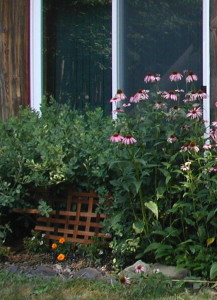
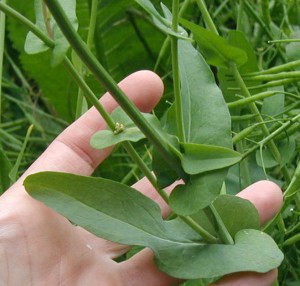
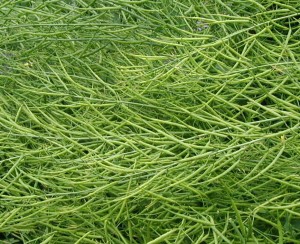
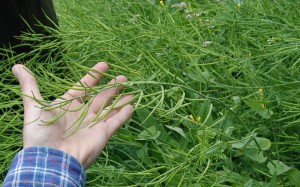
![Reblog this post [with Zemanta]](http://img.zemanta.com/reblog_e.png?x-id=e1875d20-b5a3-49a2-9613-f98a84d0e2c6)